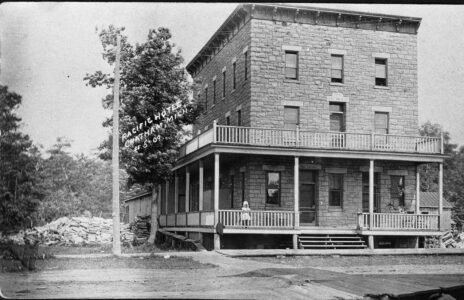The WPA in Marquette County

The new Marquette Post Office and Federal Building, built 1937. (Photo courtesy of the Marquette Regional History Center)
MARQUETTE — The Works Progress Administration was one of several New Deal work relief programs founded by President Franklin D. Roosevelt during the Great Depression. By the time it disbanded in 1943, the program had employed more than 8 million workers, or about one fifth of the nation’s work force at the time. They had constructed countless public projects at an expense of slightly over $14 billion. But what was the local effect on Marquette County?
The WPA was formed in May 1935 to supply paid jobs to the unemployed while building up public infrastructure. One of the differences of opinions was between spending the funds on “Long range projects of substance with permanent results” versus putting “the greatest number of men to work as quickly as possible.” In Marquette County, these two objectives were balanced against each other.
The main concern of the project was to feed people and provide them with some of the self-respect that was rapidly being drained with the hopelessness of the economic conditions and the embarrassment of being on the ‘dole’ for year after year.
Among the first projects from the county approved by the allotment board in Washington, D.C. were the replacement of wooden water mains in Ishpeming and the drawing of plans for a storm sewer system in Marquette. By August 1935 the Marquette County projects were underway. At that time 3,437 people had registered with the county re-employment office seeking jobs with the WPA.
Another early project employing 185 men began working on drainage and grading a highway improvement project on US-41 in and around Ishpeming. One of the main goals of this project was to improve the main routes through the area to encourage the tourist trade and provide a broader economic base beyond the mining industry. The conversion of the Marquette County landing field into an airport, including the construction of runways, hangers and other buildings, was also intended to promote tourism.
The WPA also replaced the Federal Building at the corner of Washington and Third Street, giving us the art deco building that stands today. In addition to the construction, a white-collar project included studying highway problems, traffic counts, speed determination, intersection studies, volume of tourist traffic, finances, etc. Other projects in the county ranged from the expansion of the Republic reservoir in Champion to the indexing and repairing of thousands of books in the county libraries. The John M. Longyear Research Library still uses resources that were generated by WPA workers- a transcription of the stones in local cemeteries, some of which are no longer readable, and an index of early newspaper articles.
Early in the program, there were also sewing projects where the women of the county made clothes to distribute to the destitute. The women were very proud to be earning a wage for their families but the expense per woman a month for materials was deemed to be too high and the project was terminated.
In Marquette County, three separate programs- Recreation, Arts and Music all fell under the administration of the County Recreation Supervisor. They included the construction of tennis courts, organization of baseball leagues, supervision of playgrounds and beaches, swimming classes, hiking groups, and winter sports clubs. Stonework and masonry were built at both Harlow and Williams Parks. Classes in block-printing, handicraft, and sketching, with pencil, water colors, and pastels were popular. Other cultural development projects included classes in amateur dramatics, tap dance, and a local band.
The WPA began to wind down as WWII began. The increasing war effort improved the opportunities for private employment. Even as the WPA rolls were reduced in other areas, the UP was allowed to keep their rolls at a higher level due to the local lack of opportunity to work in private industry. One of the last WPA projects in Marquette focused on gathering scrap metal for industry to supply the war efforts. It was during this time that the cable car tracks in the city of Marquette were torn up, along with other non-essential scraps.
The WPA’s liquidation was ordered in December 1942, with projects to be completed by February 1943. Overall, the program spent approximately $50 million in the Upper Peninsula, including approximately $8 million in Marquette County. With an average of 1209 employees in Marquette County each year, over its seven-year lifespan the WPA employed 8,462 people here.




